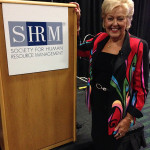This idea is excerpted from Barbara’s book “Building Customer Loyalty“, by Barbara A. Glanz, (McGraw-Hill, 1994).
To enhance your customers’ experiences and help to keep them returning, keep these guidelines in mind:
1. Regular and creative communication–Communicate with your customers in ways that will make them sit up and take notice, not just throw the newsletter or brochure in the wastebasket or delete the email. Scrutinize each of your communications for customer friendliness—“How does it make the customer FEEL?” Communicate with customers in person and by telephone on a regular basis as well, following up with them and uncovering problems before they become big issues. Many insurance customers, for instance, only hear from their agents when it is time to renew their policies–and even then perhaps only through the mail. If we remember what creates customer loyalty, we can realize how important customer service through regular communication and the personal touch is in achieving customer retention. Here are some examples of creative communication:
- Dr. Jeff Alexander, owner of a children’s dental practice in California called “The Youthful Tooth,” sends every new patient a letter describing what will happen when they come to his office. He says, “Imagine how important a 5 year old feels getting a personal letter!” Instead of appointment cards, the children get tickets — “There is a seat reserved for _________” with the time and date.
- A bank in Wheaton, Illinois, is currently perfecting an imaging system especially for personal and relationship bankers. This system allows them to write a personal message on their customers’ monthly statements as well as add their picture, a cartoon, or a graphic. These are changeable every month.
- At Carolina Telephone in Tarborough, North Carolina, they have created an insert to place with the customer’s bill. It thanks them for being a customer and also provides them with a number to call to give suggestions on how the company can serve them in even better ways.
- The MassMutual Pension Division in Springfield, Massachusetts, has a “Keep in Touch” program. It encourages employees to “just call a customer” simply to say hello and to inquire about the quality of the service they’ve received. What a wonderful way to surprise their customers and to make them feel important!
- After a recent purchase at the Saks Fifth Avenue store in Oak Brook, Illinois, I received a handwritten thank you note from the salesperson stating, “I hope you will be happy with your new outfit. Have a wonderful time on your upcoming trip. I look forward to helping you in the future.”
- Communications between an insurance company and its agents are usually weighted heavily on the business side of the scale, ” said Liz Frenette of Vision Financial Corporation in Keene, New Hampshire. In an effort to share both good news and the human level with its customers, the company purchased small jugs of New Hampshire maple syrup to mail in celebration of customer successes.
What are some creative ways you can communicate regularly with your customers?
2. Service guarantees–These become a way of differentiating or making famous a delivery system that is already performing at a high level. These guarantees tell a customer that the organization is so sure of its core service and the delivery of that core service that they are willing to be put to the test by the customer. Leonard Barry of Texas A&M University says service guarantees carry a double message, both to customers (“Our service is so great we can guarantee it!”) and to employees (“We must deliver what we have guaranteed!”) Suburban Hospital in Hinsdale, Illinois, has a powerful service guarantee. The outside marquis announces their new Emergency Room Service Guarantee: “If you are not seen by a professional in 15 minutes, your visit is free!”
Does your organization or work unit have a service guarantee? If not, is there something you do well enough to risk guaranteeing it? That sends positive messages about your core service to both customers and employees.
3. Frequency marketing–Giving special rewards or treatment to your best customers, those who buy your product a lot or use your service at a high rate, increases customer retention. Consider, for example, the credit cards that give you one airline mile for each dollar spent. Many people pay all their bills and even college tuition using that card, just so they can get the miles! Also, when as a frequent flyer, you have built up enough miles to qualify for extra bonuses, you make it a point to choose that airline over others because of the extra perks. Even small businesses can reward loyal customers. At a pizza shop, every tenth pizza you buy is free, or in another office supply store after you have spent a certain amount with them, your next purchase is reduced by 15%.
Can you think of a special reward you could suggest for your best customers?
4. Personalized service–Designing service to make it seem personal for smaller segments of your customer population or even down to one-on-one service creates customer loyalty. Some organizations have special services and programs for parents, for retired persons, and for students. This makes each group feel special and that their particular needs are being considered by the organization. Nordstrom encourages customers to find a personal service person in each department he or she visits frequently. That person gets to know you, your needs, your taste and size and will often make special calls when he or she gets in new merchandise that he or she thinks you might like. This practice saves customers’ time, makes them feel special, and helps customers, the employee, AND the store. Other organizations assign a group of customers to one specific customer service rep so that you are able to talk with the same person each time you call. This helps to create a relationship.
Can you think of ways you might be able to personalize the service in your organization?
5. Customer education–Training and educating your customers will help increase customer retention. Teaching them to use your products and services in the most beneficial way makes customers feel proud and valued. Your organization can do this by offering classes and seminars, videotapes, or even one-on-one instruction. My husband was loyal to the local Village Hardware store because the employees there were always willing to spend as much time as he needed to learn about the task he was trying to master.
What might you do in your organization to educate your customers?
6. Partnering–Partnering with a customer is like a marriage, a relationship that lasts and grows. It used to be that we “dated” a customer, lots of wining, dancing, and dining, and the relationship ended when the sale was made. Today, however, our customers want ongoing relationships. We can create those ongoing relationships by sharing our resources and our experiences, unrelated to advancing the sale but rather to being the best organizations we can be. A big part of my job as a speaker ands consultant is to be a resource to our customers. They call me for creative training ideas, for ways to keep customer service skills alive in their organizations, for books to read and courses to take, for other customers who have similar situations, and even for travel advice. I, in turn, learn from them and their unique organizations. We are truly partners!
Do you think of your customers as your “partners”?
7. Interviewing customers who leave–Customers who defect to the competition can tell you exactly what parts of the business you must improve. They can provide a view of the business that is unavailable to those on the inside. One reason to find customers who are leaving is to try to win them back. For example, a credit card company, has a customer-defection “swat” team staffed by some of the organization’s best telemarketers. When customers cancel their credit cards, the swat team tries to convince them to stay.
However, the more important reason for finding defectors is for the insight they provide. Many banks conduct “Exit Interviews” with customers who choose to close their accounts. Not only do these interviews give them a chance to recover with the customer, but they also uncover valuable information. Remember that many (94 to 96%) of our unhappy customers don’t bother to complain; they simply leave. So, whatever caused one individual to defect may cause many others to follow. The idea is to use defections as an early warning signal–to learn from those who leave why they left the company and to use that information to improve the business.
Conduct an exit interview with a customer who has left your organization. Write up what you find out and share it with your supervisor or manager.
8. Extraordinary Recovery–The ability to fix customer problems and organizational mistakes with artistry and pizazz can often overcome any dissatisfaction the customer may have with your organization. Another Idea of the Month will deal with handling customer complaints in a positive, memorable way.
Barbara Glanz Biography
A member of the prestigious Speaker Hall of Fame and one of fewer than 700 Certified Speaking Professionals worldwide, Barbara Glanz, CSP, CPAE, works with organizations to improve morale, retention and service and with people who want to rediscover the joy in their work and in their lives. She is the first speaker on record to have spoken on all 7 continents and in all 50 states. Known as "the business speaker who speaks to your heart as well as to your head," Barbara is the author of twelve books including The Simple Truths of Service Inspired by Johnny the Bagger®, CARE Packages for the Workplace, and 180 Ways to Spread Contagious Enthusiasm™. Voted "best keynote presenter you have heard or used" by Meetings & Conventions Magazine, Barbara uses her Master’s degree in Adult Learning to design programs that cause behavior change. She lives and breathes her personal motto: “Spreading Contagious Enthusiasm™” and can be reached at bglanz@barbaraglanz.com and www.barbaraglanz.com.




